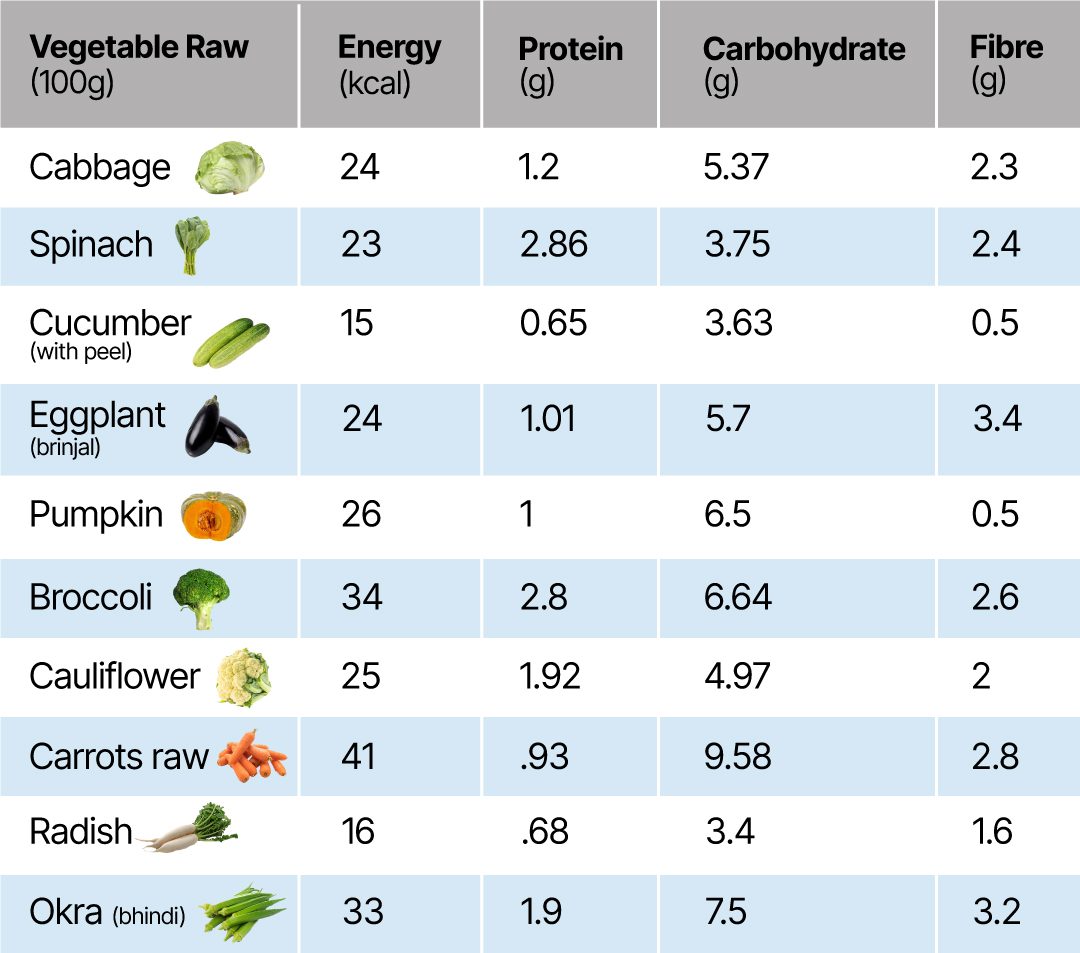How many times have you cringed at your doctor’s advice to “increase your vegetable intake”? The standard recommendation that doctors and nutritionists give all diabetics is to eat lots of vegetables, especially leafy greens. That’s it. In fact, we always suggest replacing refined carbohydrates in your diet with vegetables, which are the edible parts of plants such as leaves, stems, roots, and bulbs. Fruits are obtained from the flowering parts of plants and contain seeds. In general, fruits have a sweet taste and vegetables have a slightly salty and spicy taste. Research suggests that eating vegetables before other foods in your meal can help lower postprandial blood sugar levels. Therefore, it may be a good idea to start your diet with leafy vegetables.
Why is this ordering important and why should we increase vegetables in our diabetic diet? Are all vegetables the same, or are some vegetables better than others? Depending on how they are prepared Is there any difference? This column answers some of the most frequently asked questions.
Leafy vegetables contain soluble and insoluble fiber, antioxidants, vitamins, and minerals. Additionally, it contains a variety of beneficial substances, including plant sterols, flavonoids, and other antioxidants with anti-inflammatory properties. The WHO recommends consuming at least 400 grams of vegetables per day to improve overall health and reduce the risk of non-communicable diseases. Contrary to popular belief, vegetable intake in India is well below recommended standards, averaging only 150 grams per day.
Vegetables play an even more important role for people with type 2 diabetes. Carbohydrate content, portion size, and glycemic index (how quickly a food raises blood sugar levels) determine the postprandial blood sugar spike. The high fiber content in vegetables reduces the post-meal surge, increases satiety, and provides variety and flavor despite having fewer calories than cereal. It’s important to eat a variety of vegetables because no single vegetable has all the desirable properties.
Good vegetable options for people with type 2 diabetes are those that are rich in fiber and contain a variety of vitamins, minerals, and antioxidants. Some antioxidants may have unique benefits for people with type 2 diabetes. These include alpha-lipoic acid (ALA), found in leafy green vegetables such as kale and spinach; N-acetylcysteine (NAC), found in allium vegetables such as onions and garlic; and N-acetylcysteine (NAC), found in abundance in citrus fruits. Contains vitamin C. And green peppers, strawberries, and broccoli. Vegetables that contain nitrates, which lower blood pressure, are also good choices (such as arugula leaves, beets, lettuce, celery, and radishes).
protein contained in vegetables
Plant-based protein sources include tofu, chickpeas, and peanuts. Vegetables aren’t great sources of protein, but some vegetables are richer in protein than others. Vegetables such as watercress, jhal kumbi, alfalfa sprouts, spinach, asparagus, mustard greens, sarson saag, collard greens, haak saag, broccoli, Brussels sprouts, and cauliflower contain 2 to 4 grams of protein per 100 grams.

gut health and vegetables
well read
As relations between India and Canada deteriorate, Indian students and residents wishing to settle in Canada are feeling anxious.
Reminiscing about when Amitabh Bachchan and Jaya Bachchan were dating, Farida Jalal said, “They would pick us up at night and go for long drives.”
The gut microbiome plays an important role in carbohydrate and fat metabolism and can influence the body’s ability to regulate blood sugar levels. Studies have shown that people with type 2 diabetes have a less diverse and imbalanced gut microbiome than healthy people. The fiber in the leafy vegetables we eat feeds the bacteria in our gut. These fibers are indigestible by humans, but are easily broken down by our friendly gut bacteria, helping them thrive and balance our microbiome. The best vegetables for gut health are spinach, okra, garlic, onions, mushrooms, bok choy, arugula, cabbage, and cauliflower.
rainbow plate
Fill about half of your plate at each meal with non-starchy vegetables such as spinach, cucumbers, eggplant, radishes, and broccoli. Starchy vegetables such as peas, corn, and potatoes (including sweet varieties) contain vitamins, minerals, nutrients, and fiber, but they also contain more carbohydrates than non-starchy vegetables. Raw vegetables generally contain more fiber than cooked or processed vegetables. Deep-frying vegetables or making them part of rich curries strips them of their beneficial properties. Your plate should always contain a quarter of roti/chawal and at least half a vegetable.
The amount of starchy vegetables a person can eat depends on their dietary needs and carbohydrate goals for each meal. One cup of starchy vegetables contains about 30 grams of carbohydrates, which is the equivalent of two servings of carbohydrates. One of the most frequently asked questions has to do with potatoes. Many people feel that potatoes are prohibited in diabetes. It is acceptable to eat potatoes as part of a balanced diet, but remember that they should be counted in your daily carbohydrate intake and that they should not be fried. Eating potatoes with foods rich in fiber, lean protein, and healthy fats is preferable as it can lower the glycemic index of the meal.
Date first published: September 20, 2023, 09:42 IST

